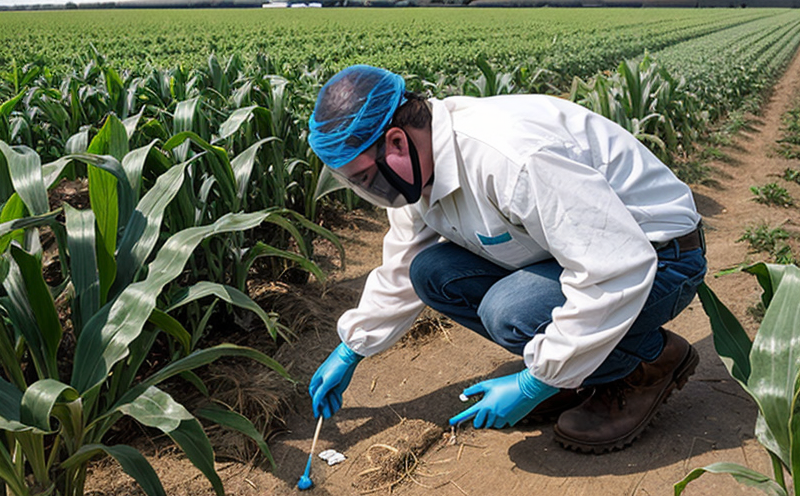DDT Residue Testing in Crops
The presence of DDT (Dichlorodiphenyltrichloroethane) residues in crops poses significant health and environmental risks. As a critical service, we provide comprehensive testing to ensure that crop products meet international safety standards and regulatory requirements. This testing is essential for compliance with global guidelines such as the Codex Alimentarius and the European Union's maximum residue limits (MRLs).
In this service, we employ advanced analytical techniques to detect DDT residues in a wide range of crops. The testing process involves meticulous sample preparation, followed by analysis using high-performance liquid chromatography (HPLC) or gas chromatography-mass spectrometry (GC-MS). These methods ensure the highest level of accuracy and precision.
Our laboratory strictly adheres to international standards such as ISO/IEC 17025 for quality assurance. The testing process is designed to be methodically thorough, ensuring that even trace amounts of DDT can be identified. We also offer turnaround times tailored to meet urgent needs while maintaining the highest standard of accuracy.
For compliance officers and quality managers, our service ensures peace of mind by providing reliable data on pesticide residues. This information is crucial for maintaining a reputable brand and ensuring consumer safety. R&D engineers benefit from this testing as it helps in understanding the persistence and distribution of DDT in various agricultural environments.
The importance of DDT residue testing cannot be overstated, especially given the global emphasis on sustainable agriculture practices. By adhering to stringent testing protocols, we contribute to a safer food supply chain that meets international standards.
| Sample Types | Test Methods | Regulatory Compliance |
|---|---|---|
| Cereals, Vegetables, Fruits, Grains, Oilseeds | HPLC, GC-MS | Codex Alimentarius, EU MRLs |
Industry Applications
The application of DDT in agriculture has been widely debated due to its potential health and environmental impacts. Despite the restrictions on its use imposed by many countries, it is still found in some crops due to historical usage or accidental contamination.
| Crop Types | Application Examples |
|---|---|
| Wheat, Barley, Corn, Cotton | Testing for DDT residues is mandatory before export and internal sale to ensure compliance with international standards. |
In the context of agriculture and forestry testing, our service plays a vital role in ensuring that crops are free from harmful contaminants. This testing is particularly important for countries that import and export agricultural products, as it ensures that the products meet stringent safety standards.
International Acceptance and Recognition
The global consensus on DDT residue limits has been established through various international bodies such as the Codex Alimentarius Commission. These guidelines are designed to protect public health and ensure that food safety regulations are met across borders.
Our laboratory's testing methodologies align with these standards, ensuring that our results are internationally recognized. This recognition is crucial for businesses engaged in international trade, as it simplifies compliance processes and enhances the credibility of their products.
The acceptance of our test results by regulatory bodies such as the Food and Agriculture Organization (FAO) and World Health Organization (WHO) further strengthens our service's reliability. This ensures that the data generated is credible and can be used in various contexts, including government reports and academic publications.
Use Cases and Application Examples
- Export Compliance: Testing for DDT residues is mandatory before exporting crops to countries with strict import regulations.
- Internal Sales: Ensuring that crops sold domestically meet safety standards as mandated by local governments.
- R&D: Monitoring the persistence and distribution of DDT in different agricultural environments.
| Crop Samples | Potential Risks | Testing Frequency |
|---|---|---|
| Cotton, Wheat, Corn | Health and environmental concerns due to DDT exposure. | Annual or quarterly testing based on crop rotation schedules. |
In addition to these use cases, our service is also valuable for food safety agencies and agricultural research institutions. By providing reliable data, we assist in the development of safer farming practices that minimize the risk of DDT contamination.





